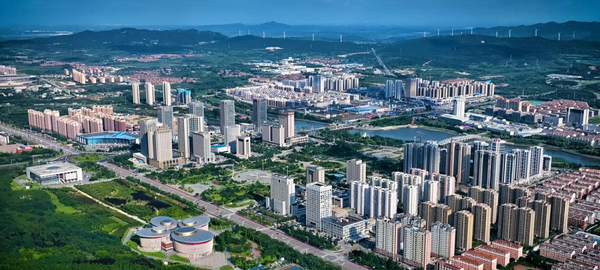Innovation drives industrial upgrading in Weihai's district
Wendeng district in Weihai is using innovation to drive its economic transformation, helping local enterprises enhance their global competitiveness and advance up the value chain. This strategic focus is bringing a significant change to the district's industrial landscape.

A bird's-eye view of Wendeng district, home to thriving high-tech enterprises. [Photo provided to chinadaily.com.cn]
Mapower Tool Group, a leading producer of adjustable wrenches in the district, exemplifies this transformation. Once focused on mid- and low-end products with thin margins, the company has redefined itself through sustained research and development investments. It attributes revenue growth to innovation, collaborates with universities, and operates in-house innovation platforms. Today, it holds more than 400 valid patents, with new products adding over 50 million yuan ($7 million) in output value annually. High-end exports now make up more than 40 percent of its overseas sales, serving advanced sectors such as rail transit, metallurgy, and petrochemicals.
Mapower is not alone. Across Wendeng, businesses are accelerating transformation in high-end equipment, marine industries, and healthcare. In 2025, the district secured more than 22 million yuan in science and technology funds for enterprises and facilitated nearly 100 million yuan in achievement transformation loans. Today, Wendeng is home to 210 high-tech companies and 367 registered national tech-based SMEs, with annual growth in the sector surpassing 13 percent for three consecutive years.
Officials state the district will continue to focus on innovation-driven development. Future plans include strengthening policy support, upgrading research platforms, and advancing technology projects to create an ecosystem where innovation drives high-quality growth and long-term prosperity. From shop floors where robotic arms assemble precision tools to labs developing the next generation of industrial solutions, Wendeng is building the edge needed to thrive in global markets. (Edited by Hu Kaili)








